How to Remove and Install a Crank
This article will assist in identifying the crank system found on your bike, and direct you to the article that outlines the full process of removal and installation.
Identifying Your Crank System
Cranks are levers that connect the pedals to the bottom bracket spindle. The cranks are fitted with toothed sprockets called chainrings that drive the chain. Cranks may be removed to replace cranks or chainrings, service the bottom bracket bearings, or to clean the chainrings. Crank systems have become more complex in recent years. To know the service options you will need to know the type of crank and type of bottom bracket bearing system installed in the bicycle.
If you don’t know what crank system you have, you can use the video above or the information in this article below to assist you in identifying your crank type.
Self-Extracting Cranks
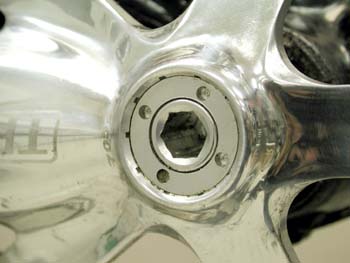
Self-extracting system with pin holes in retaining cap
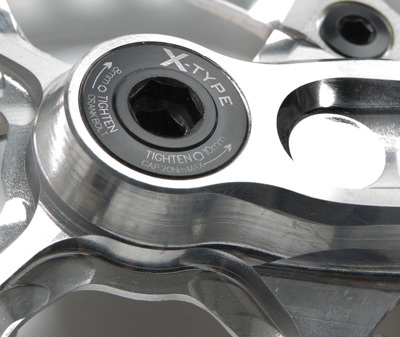
Self-extracting system with hole fitting in retaining cap
On self-extracting crank systems, the crank puller is effectively built into the crank. Self-extracting systems use threaded rings that look similar to a crank dust cap. However, these crank retaining rings are threaded over the crank bolt, so that when the crank bolt is loosened the shoulder of the bolt presses back against the ring, which in turn slowly pushes the arm from the spindle. No additional crank removal tools are required. Self-extracting systems exist in both two-piece and three-piece form.
 Crank Removal and Installation: Self-Extracting
Crank Removal and Installation: Self-Extracting
Two Piece Compression Slotted Cranks
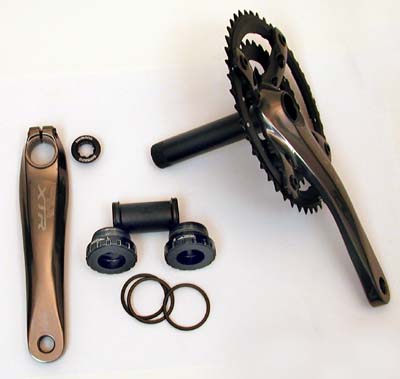
Shimano® Hollowtech II® style crank
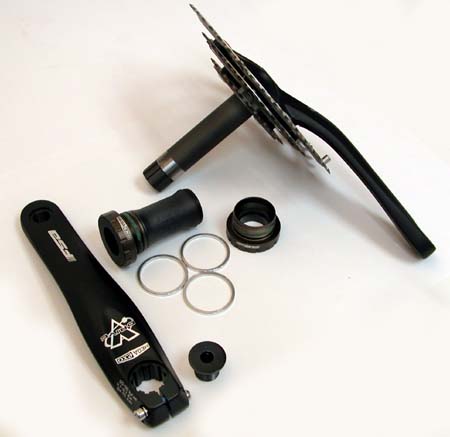
FSA® MegaExo® style crank
Many Shimano® and some FSA® cranksets use a two-piece compression slotted system. These have a left crank arm with a compression slot that is secured by two pinch bolts and a right crank arm with an integrated spindle. These systems use external bearing cups and do not need a conventional crank puller.
 Crank Removal and Installation: Two-Piece Compression Slotted
Crank Removal and Installation: Two-Piece Compression Slotted
Campagnolo® Power-Torque™ Cranks
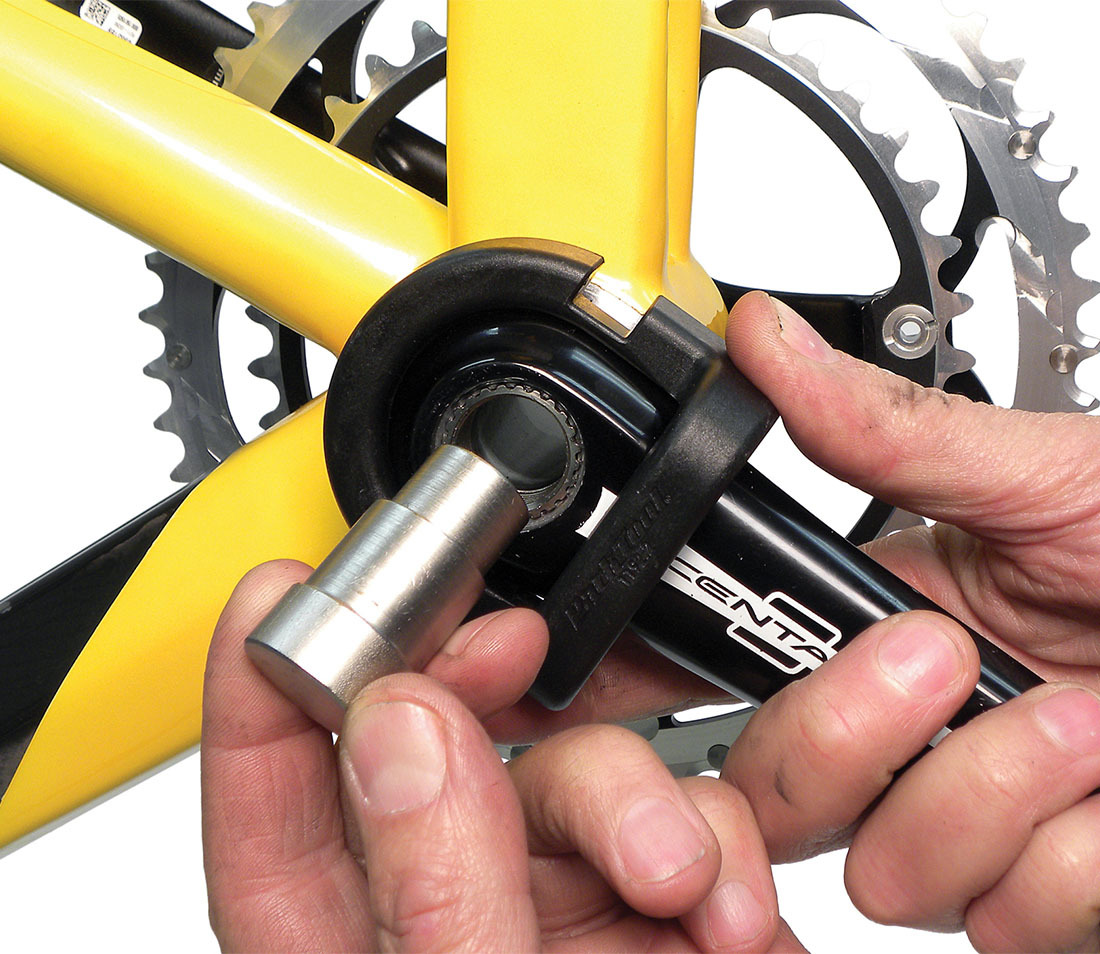
The Power-Torque™ crank uses a spindle integrated into the drive side crank. The left side crank is removed to get to the bearings or to remove the right crank.
 Crank Removal and Installation: Campagnolo® Power-Torque™
Crank Removal and Installation: Campagnolo® Power-Torque™
Campagnolo® Ultra Torque™ Cranks
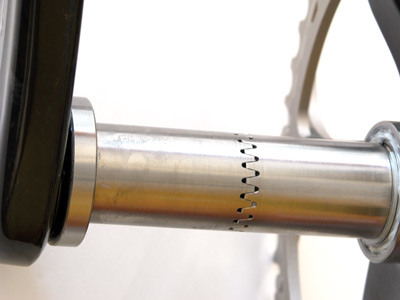
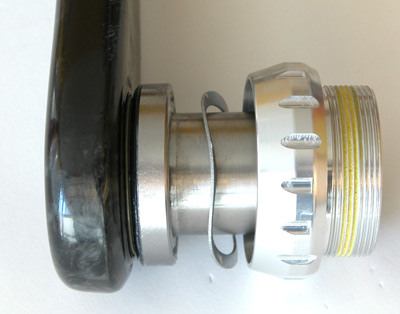
Ultra-Torque™ is a proprietary crankset system used by Campagnolo® and Fulcrum®. With this system, both the left and right crank arms are fitted with one-half of the spindle system, with teeth machined into each spindle end. While Ultra-Torque™ uses external bearing cups, the bearings are not integrated. Instead, the bearings are mounted onto the cranks.
There is a “wavy washer” in the left side cup. This washer is used to account for variations in frame shell widths and effectively acts as the bearing adjustment.
 Crank Removal and Installation: Campagnolo® Ultra Torque™
Crank Removal and Installation: Campagnolo® Ultra Torque™
Three Piece Cranks
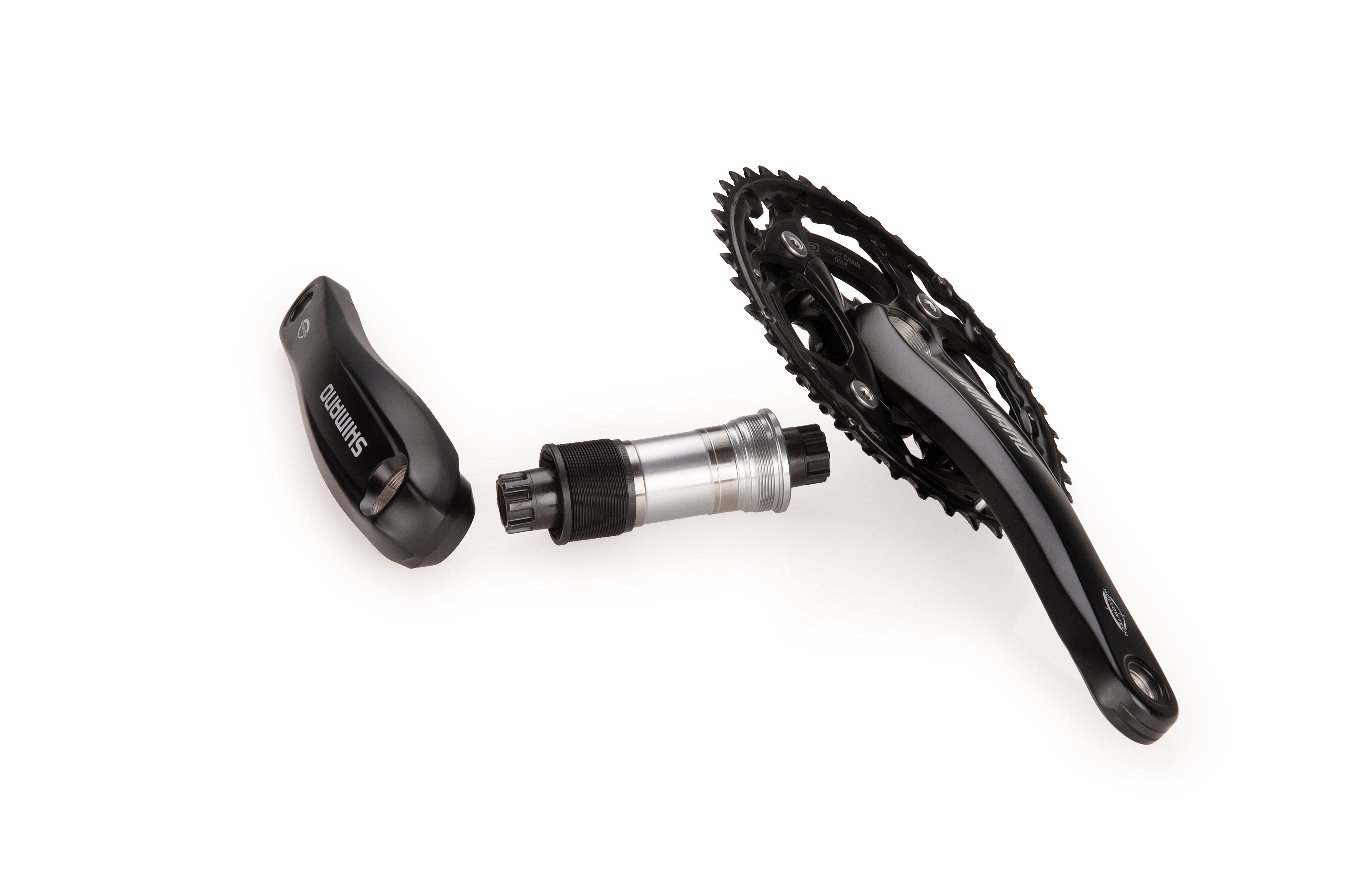
The parts of the three-piece crankset are the left arm, right arm, and axle spindle. The spindle is held in position by bearings in the frame. Both cranks must be removed to service or replace the bearings of a three-piece system. Both left and right cranks will have crank bolts in the arms.
Three piece cranksets generally have one of two interfaces: square spindle arms or splined spindle arms.
 Crank Removal and Installation: Three-Piece
Crank Removal and Installation: Three-Piece
BMX Three Piece Cranks
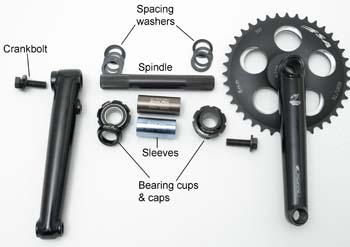
Many BMX and freestyle bicycles use a unique crank system that utilizes a 48 spline spindle. The process of servicing these cranksets is slightly different than standard three-piece cranksets.
Crank Removal and Installation: BMX Three-Piece Style
One Piece Cranks
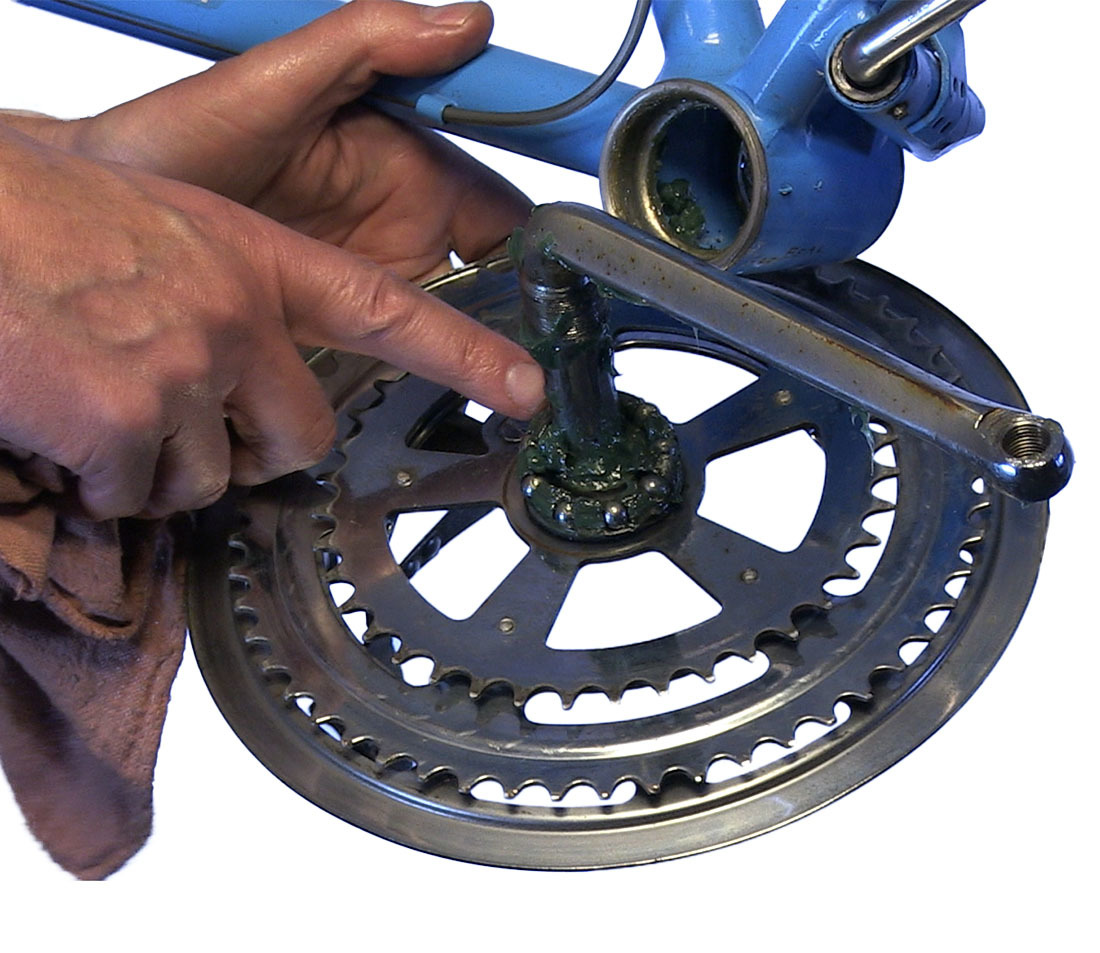
One-piece cranks are found on some older Schwinn® bicycles, many children’s and BMX bikes, and on many department store-type bikes. One piece of steel forms the crank arms and goes from the pedal, through the bottom bracket, to the other pedal. This crank also acts as the bottom bracket bearing axle.